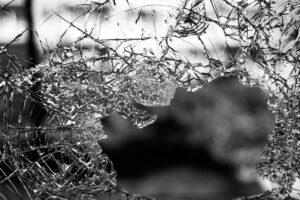
Even though the Allies reigned victorious during World War 2, does not mean that there was not a risk of the Nazi
powers winning and gaining control. Not only was Nazi Germany trying to hash out a plan for world domination,
they were also trying to keep in touch with their deep evil scientist. The Manhattan Project was the American
and British answer to this crisis, and the Nazis followed suit, actually starting their official program sooner
than the Americans. (top 10 scientists involved in the Nazi Germany Nuclear Program)
—
Much of the creation of the bombs were to initiate intimidation in the other side, let alone
to be used in cases they deemed fit. Both sides were unsuccessful in making the bomb on time before the Nazi defeat,
but the American project finished their project, unlike the Germans, and they ended up using it for a catastrophic
reason. I’m going to list (the top 10 Nazi nuclear scientists) the top 10 scientists involved in the Nazi Germany Nuclear Program.
Top 10 Nazi Nuclear Scientists
1. Otto Hahn
Otto Hahn was a German chemist born in Frankfurt, Germany in 1879. Hahn is famously known for his discovery of nuclear fission, along with radiochemist Fritz Strassmann. He was later awarded the Nobel Prize for Chemistry
in 1944, sharing the 1966 Enrico Fermi Award with Strassmann and Lise Meitner. Hahn, early on, wanted to study
chemistry, even though his parents wanted him to become an architect and had an interest in art and philosophy.
Hahn later went to England then Montreal to gain experience with radioactivity before returning to Germany in 1906
to work with Meitner and head of a department of radiochemistry.
—
He later joined World War 1 as a chemical-warfare specialist in 1915, and he later made discoveries with Meitner,
including be the first to isolate protactinium. Later on, in 1938, he, with the help of Strassman, discovered
nuclear fission with barium and uranium, in spite of Meitner having to leave Germany. Hahn later joined the nuclear
program during World War 2, being able to conduct his own research and joining the program as a director before
winning his Nobel Prize for 1944 and hearing the news of Hiroshima.
2. Werner Heisenberg
Werner Heisenberg was a German physicist born in Wurzburg, Germany in 1901. He is famously known formulate
quantum mechanics in terms of matrices. He was awarded the Nobel Prize for Physics in 1932 and published the
uncertainty principle, building his philosophy and making important contributions to the theories of turbulent
flows, the atomic nucleus, ferromagnetism, cosmic rays, and subatomic particles. This wise man was also
instrumental in planning the first West German nuclear reactor at Karlsruhe along with a research reactor in
Munich in 1957.
—
However, Heisenberg is often considered controversial for his work with the Nazis, especially the atomic research
he was doing in the name of Hitler. Later on, in 1933, many of his colleagues were dismissed because of the Nazi
rise to power because of their Jewish heritage, and he later became under ideological attack by Nazi Scientists
for helping many of his friends and coworkers who had been persecuted, being called a “white Jew.” In spite of
this, he felt a need to stay in Germany to further his career, making compromises with the Nazi regime to retain
what he had, even though he had offers given to him by the US.
—
He continued to make progress with cosmic ray research, until in the late thirties when World War 2 broke out,
he was drafted to work for the Army Weapons Bureau to solve problems of nuclear energy. In 1942, he took on
a leading role in Germany’s nuclear research programs. Regardless of his controversial involvement, they research
team was largely unsuccessful in producing a reactor or atomic bomb. The German program lacking the international
power that the American Manhattan project had played a huge role.
Top 10 Nazi Nuclear Scientists
3. Walther Bothe
Walther Bothe was a German physicist born in Oranienburg, Germany in 1891. He is well known for sharing the 1954 Nobel Prize in Physics with Max Born for his invention of a new method of detecting subatomic particles, as well
as other resulting discoveries. Bothe taught at various universities, including in Berlin, gathering data on the
Compton effect and establishing the nature of electromagnetic radiation.
—
He would continue to do research on neurons and cosmic radiation, including understanding radiation emitted
by beryllium. Later on, during World War 2, Bothe got himself embroiled in the Nazi “Energy Research” program,
helping the Germans research of nuclear energy. Bothe was responsible for the planning and building of Germany’s
first cyclotron, which was later completed in 1943.
4. Klaus Clusius
Klaus Clusius was a German physical chemist born in Breslau, Poland in 1903. He is known for working on isotope
separation techniques and heavy water production, later becoming a professor of physical chemistry at the
University of Zurich. He would often be cited as one of the main instruments in the German project for nuclear
energy, known as the Uranium Club.
—
His education was comprised of going to the Wroclaw University of Technology, going to Oxford and Leiden
University at their physicochemical institutes and becoming a teaching assistant around 1931. He would later
become a professor at several different universities, eventually announcing the separation of chlorine isotopes.
Clusius was invited to the second Uranium Club meeting in 1939, and he would give lectures and conduct experiments
with other scientists exploring isotope separation.
Top 10 Nazi Nuclear Scientists
5. Kurt Diebner
Kurt Diebner was a German nuclear physicist born in Odeernessa, German Empire in 1905. Diebner, unlike many
physicists, did not earn his degree until the ripe age of 27, later serving as a teaching assistant,
researcher, then advisor at the Armed Ordinance Office. Diebner later served as the Director of the German
Army’s Nuclear Research Council, being one of the leading physicists of the “Uranium Group.” This group was
responsible for working on a nuclear bomb, obviously.
—
After the outbreak of the Second World War, he organized the groups first meeting, overseeing the research
project as its administrative director. While Heisenberg was leader of the theoretical department, Diebner
was in charge of the experimental side, intense competition breaking out as they became more and more deep.
Diebner’s crew later created better schematics than the other group, later allowing for better cooperation.
The results would not happen fast enough, Diebner and other scientists later abandoning the project
altogether.
6. Paul Harteck
Paul Harteck was a Austrian chemist born in Vienna, Austria in 1902. Harteck graduated from universities in
Vienna and Berlin. Paul Harteck’s main role in the program was to extract U-235, and he would also be interested
in developing techniques for efficiently making heavy water. He considered this highly valuable to the German
war effort during World War 2.
—
He would later conclude that U-235 would be too expensive, in spite of wanting to have it work for the war efforts.
Separating them, in spite of his knowledge of nuclear reactors, would be something out of reach for them. He was
later one of the German scientists detained and brought to England, later teaching at a Polytechnic Institute from
1951-1968.
Top 10 Nazi Nuclear Scientists
7. Carl Friedrich von Weizsäcker
Carl Friedrich von Weizsäcker was a German theoretical physicist and philosopher born in Kiel, Germany in 1912.
Later on, he studied physics, astronomy, and math, going between several German institutions and receiving his
PhD in 1933, becoming a physics professor shortly after. He would go between jobs, working alongside many noted
scientists, including Werner Heisenberg and Niels Bohr, focusing much on planetary formation and the energy of stars.
—
Weizsacker was involved in the German nuclear weapons program early on, and Albert Einstein even mentioned him
in the letter sent to President Franklin D. Roosevelt. He would end up being one of the lead scientists in the
program “Uranium Club,” working on the the project and attending the first meeting in September of 1939. Much of
the research he and other scientists did related to the fission of uranium and plutonium isotopes, drafting two
patents which were later found in Moscow on methods to generate energy from neutrons. Much of his research was
conducted at the University of Strasbourg, being sent later to Farm Hall in England thanks to the Alsos Mission.
8. Nikolaus Riehl
Nikolaus Riehl was a German nuclear chemist born in Saint Petersburg, Russia in 1901. He went to Saint Petersburg
Polytechnical University, later being educated in Berlin. He received a doctorate in nuclear chemistry from the
University of Berline, later making his thesis on beta ray spectroscopy. He would later receive a position in
German industry with the Auergesellschaft, becoming an authority of luminescence.
—
He continued his career with luminescence, staying with the Auergesellschaft, becoming head of optical engineering. The sect he was working in had a substantial amount of “waste” uranium, extracting radium and later taking the business opportunity after writing a paper on the technical use of nuclear energy. He later went to the Army
Ordinance Office to discuss a production of uranium, committing himself to the task, helping the nuclear program.
Top 10 Nazi Nuclear Scientists
9. Abraham Esau
Abraham Esau was a German physicist born in Landkreis Marienburg, West Prussia in 1884. He is known for pioneering very high frequency waves used in radar, radio, and television. Esau received his doctorate in Berlin, and fought in World War 1, becoming a prisoner of war of the French. He later became a professor at the University of Jena,
serving as rector. Starting in 1933, Esau was the State Councilor in Thuringia, and he later, in 1937, became
head of the physics section of the Reich Research Council.
—
In 1939, he became professor at the University of Berlin, as well as the president of the Reich Physical and
Technical Institute. After this, he would initiate the first meeting of the Uranium Club in 1939, which would
be the precursor to the Army Ordnance Office German nuclear energy project. Esau became the plenipotentiary
of the nuclear physics program in 1942, being in control of the project. He would then become the leader of the
high-frequency engineering and radar working group, being one of the most powerful physicists in all of
Deutschland.
10. Hans Geiger
Han Geiger was a German physicist who was born in Neustadt an der Haardt, Germany in 1882. He was the one who
introduced the first successful detector, known as the Geiger counter, of individual alpha particles and other
ionizing radiations. Geiger earned his PhD at the University of Erlangen in 1906, later joining the staff at
the University of Manchester and collaborating with Ernest Rutherford. During his time at Manchester, he built
the first version of the particle counter he became so well known for, later leading to the identification of the
alpha particle.
—
He later moved back to Germany and worked in Berlin and served in World War 1 as an artillery officer in the
German Army. He later devised coincidence counting, using it to later clarify details of the Compton effect.
He took a teaching job after this, and continued his search of cosmic rays, artificial radioactivity, and
nuclear fission, eventually leading him to be a part of the first and second Uranium Club of the nuclear program
in 1939.
Top 10 Nazi Nuclear Scientists
Other Mentions: Robert Dopel, Georg Stetter, Walther Gerlach, Erich Schumann, Siegfried Flugge, Wilhelm Hanle, Hans Kopfermann
Even though many of the scientists were not necessarily Nazis with the intent of nuclear control and power, they still took part. They were simply being scientists, but it came at a cost, including the help they gave in being a part of the Nazi war machine. The cost of their lackluster attempt at nuclear bombs was probably part of the reason the war was lost.
Blog Page: https://creatorconquer.com/bloggers-paradise/
Godspeed






Recent Comments